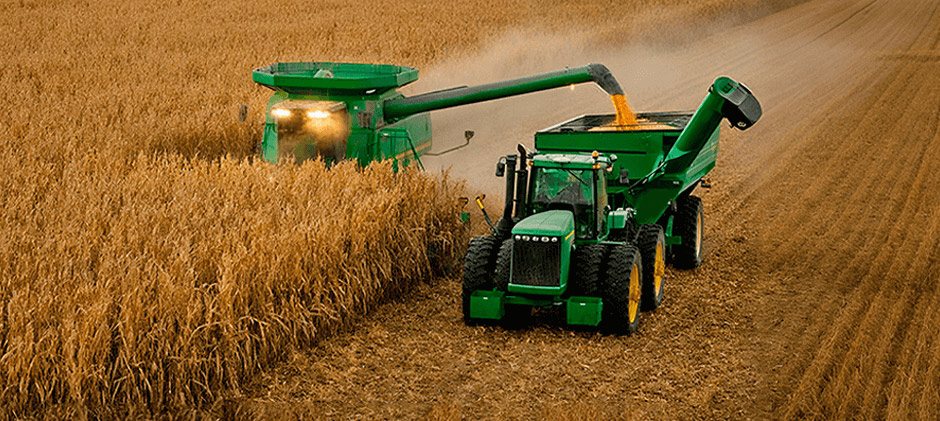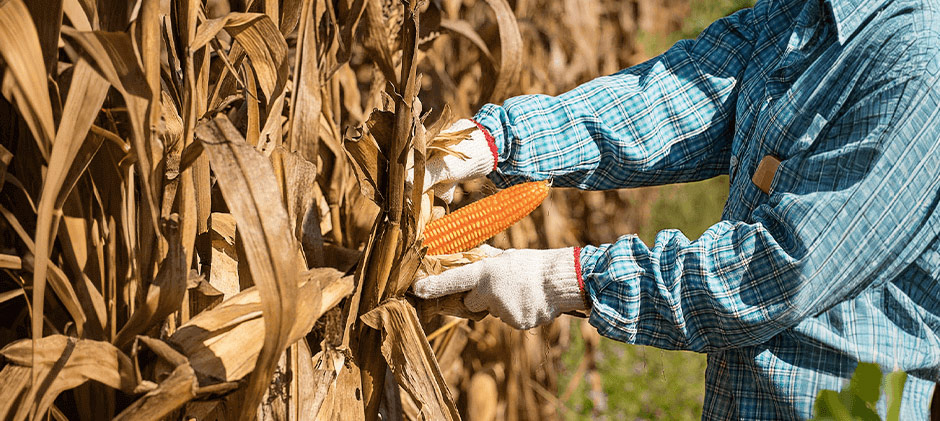Corn harvest stands as the crystallization of a year’s diligent toil. It relies upon the precise grasping of optimal ripeness and moisture, concomitant with the employment of dependable and well-maintained harvesters. Perceiving the harbingers of corn maturation, whilst perpetually prepared to commence reaping at the most advantageous juncture, constitutes the foremost task of the autumnal harvest season. By dedicating time to inspecting equipment and devising plans for procuring components of high quality yet reasonable cost, one can maximize the diminution of downtime, ensuring that machinery remains ever-ready at critical moments—thereby safeguarding both the crop and accrued profit.
When Is Corn Mature?
Before discoursing upon the matter of harvest, one must foremost comprehend the moment at which the corn plant has completed its growth and development. Betwixt physiological maturity and harvest maturity lieth a subtle yet vital distinction. When the kernels of corn have been filled with the utmost quantity of dry substance (starch), the plant is deemed physiologically mature. Beyond this point, the kernels add no more weight.
Two principal visual tokens signify the ripening of the corn crop:
- The Dent Stage: As the kernels advance toward maturity, the tender, milky interior beginneth its transformation into hardened starch. This process proceeds from the crown of the kernel downward. With the solidifying and contracting of the starch, a small but distinct indentation — or “dent” — does appear atop each kernel. This mark heralds the commencement of the drying process.
- The Black Layer: This serves as the unmistakable seal of physiological maturity. To behold it, one must pluck a kernel from the ear and examine its base — the portion whereby it clung to the cob. As maturity progresses, a milky line of starch descendeth from the upper end of the kernel toward the base. When at last this milk line reacheth the bottom, the plant withdraweth its nourishment, forming a dark barrier that closeth the passage — the so-called “black layer.” Once this black layer hath come into being, the kernel hath reached the greatest mass and fullness attainable.
At this juncture, the labors of the plant are concluded.
When is Corn Ready to Harvest?
Although the presence of a black layer indicates that corn has already reached maturity, it does not necessarily signify that it is yet suitable to be gathered by the harvester. At the black layer stage, the kernel moisture content generally remains around 30–35%, a level excessively high for safe storage and one that would bring forth considerable price deductions at the grain elevator. The ideal field harvest moisture content for corn usually lies between 15% and 25%. The intention herein is to allow the corn to desiccate naturally in the field as much as possible, while avoiding yield reduction.
Harvesting Timelines Across the U.S.
- The Southern States (e.g., Texas, Mississippi, Louisiana): Owing to their elongated growing seasons and warm climates, farmers in these southern regions sow earlier, typically in March and April. Thus, their harvest is the earliest in the nation, commonly commencing in late August and continuing through September. Yet, the challenge here lies in the persistent humidity, which retards the natural drying process.
- The Corn Belt (e.g., Iowa, Illinois, Indiana, Nebraska): This area constitutes the very heart of America’s corn production. Sowing generally transpires in late April and May. The harvest here, as most would envision, reaches its grand crescendo in late September and carries onward into October. Variations of several weeks may occur, contingent upon whether a damp spring postpones planting or a cool summer decelerates growth.
- The Northern Plains (e.g., North Dakota & South Dakota, Minnesota): Because of the brevity of the growing season, farmers in this region tread a fine line. Planting is done in May, while harvesting is often delayed until late October or even November. They confront an elevated peril of early winter blizzards, which may entirely halt production. For such producers, harvesting at somewhat higher moisture levels (for instance, 20–22%) commonly stands as a necessary stratagem to bring in the crop before snowfall descends.
How to Harvest Corn Efficiently?
Efficiency during harvest isn’t just about driving fast; it’s about maximizing the amount of grain that ends up in the tank while minimizing fuel consumption, wear on the machine, and downtime. Your harvester is the key, and its performance depends on preparation and proper operation.
1. Conduct a Thorough Pre-Harvest Inspection
Before the first ear of corn is picked, your combine and corn head need to be in top condition. The stress of harvest will quickly expose any weak points.
- Inspect the Corn Head: Check the gathering chains for proper tension and look for worn or broken fingers. Examine the stalk rolls—are the knife edges sharp? Worn stalk rolls will struggle to pull the stalk down, leading to ear loss. Inspect the deck plates to ensure they are adjusted correctly and not excessively worn.
- Inspect the Combine: Look at the threshing elements (rasp bars or rotor bars), concaves, and sieves. Worn components will not separate the grain efficiently, leading to higher grain loss out the back of the machine.
- Stock Up on Spares: Breakdowns are inevitable, but long downtimes are not. Having critical spares on hand is essential. This is where a reliable supplier for high-quality aftermarket harvester parts becomes invaluable. Being able to quickly replace a worn chain, bearing, or sensor can save a full day of harvesting.
2. Calibrate and Set Your Machine for Conditions
A combine is not a “set it and forget it” machine. Settings must be adjusted for changing conditions throughout the day.
- Corn Head Settings: Adjust the deck plates to be just wide enough to allow the stalk through while preventing ears from shelling and falling to the ground. Sync your header speed to your ground speed to gently pull ears into the machine.
- Threshing and Separation: Adjust your rotor/cylinder speed and concave clearance. If the moisture is high, you may need more aggressive settings (faster speed, tighter clearance) to shell the corn. As it dries, back off these settings to avoid cracking kernels.
- Cleaning Fan Speed: Adjust the fan speed to blow out the lighter chaff and debris without blowing heavy kernels out the back.
3. Operate at an Optimal Ground Speed
Pushing the harvester too fast is one of the biggest causes of yield loss. At excessive speeds, the corn head can knock ears off, and the threshing system becomes overloaded, throwing more grain out the back. Find the “sweet spot” where you are moving efficiently but your grain loss monitor remains low.
4. Monitor for Grain Loss
Don’t rely solely on the monitors in the cab. At least once a day, stop the combine, back up, and physically check the ground for lost kernels. Check behind the header for ear loss and shelled corn, and check behind the main machine for kernel loss from the separator and cleaning shoe. A few kernels may seem small, but spread over hundreds of acres, they add up to significant lost revenue.
How Long Does the Corn Harvest Take?
The harvest time is not fixed. The harvest time of corn is affected by many factors:
- Total Acreage: The most self-evident factor. The larger the acreage under cultivation, the more prolonged the time necessary for harvesting shall be.
- Equipment Capacity: The magnitude of the corn header and the overall handling capability of the combine harvester determine how many acres may be reaped within an hour. The employment of multiple combines may considerably abbreviate the duration of the harvest.
- Weather: This stands as the greatest element of uncertainty. A single heavy rainfall may render the fields muddy and impassable for days, thus bringing the entire operation to a standstill.
- Logistics: Harvesting is, in essence, a choreography of logistics. The tempo of harvest is frequently restrained by the capacity to convey the grain away from the combine. This encompasses the number of grain carts and trucks, as well as the distance and waiting period at local elevators or farm storage bins.
- Breakdowns: In an ideal world, the machinery performs with flawless precision. Yet, in reality, malfunctions are not uncommon. A failed bearing, a broken chain, or a hydraulic leakage in the combine can squander precious hours—or even days—during the most critical juncture of the agricultural year.
For a farm of moderate scale, the corn harvest may extend from three to six weeks, contingent upon the combined influence of these manifold factors.

Maximize Your Harvest Window
A successful corn harvest stands as the crystallization of a year’s laborious endeavor. It relies upon the precise discernment of the optimal window of maturity and moisture, and the employment of a harvester both dependable and well-maintained. To perceive the omens of corn ripeness and be ever prepared to execute the harvest at the most propitious moment is the paramount task of the autumn reaping season. By devoting time to the inspection of equipment and establishing a plan for the procurement of superior yet affordable parts, one may minimize downtime to the utmost extent, ensuring that the machine is in readiness when the moment arrives — thus safeguarding both the crops and the profits.

